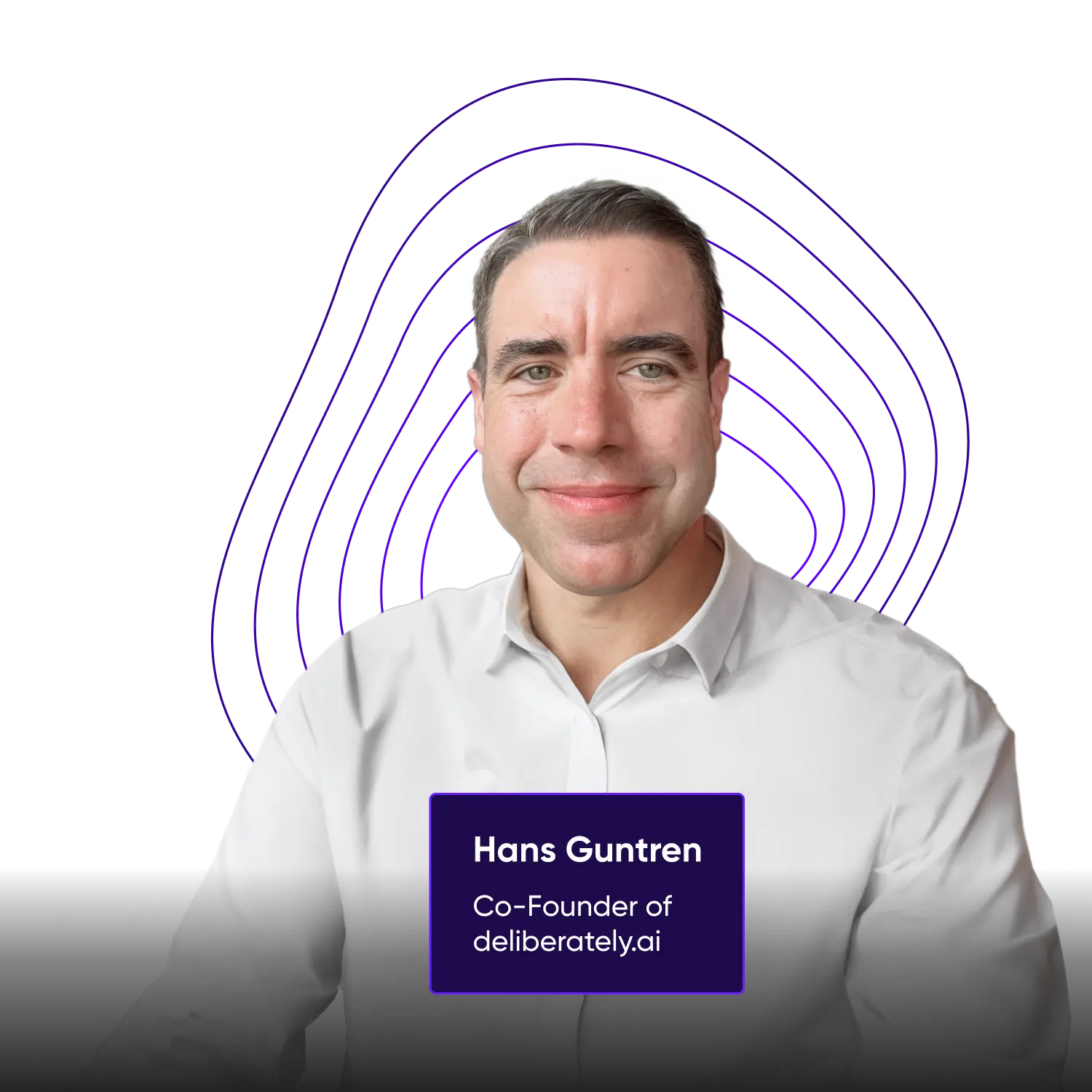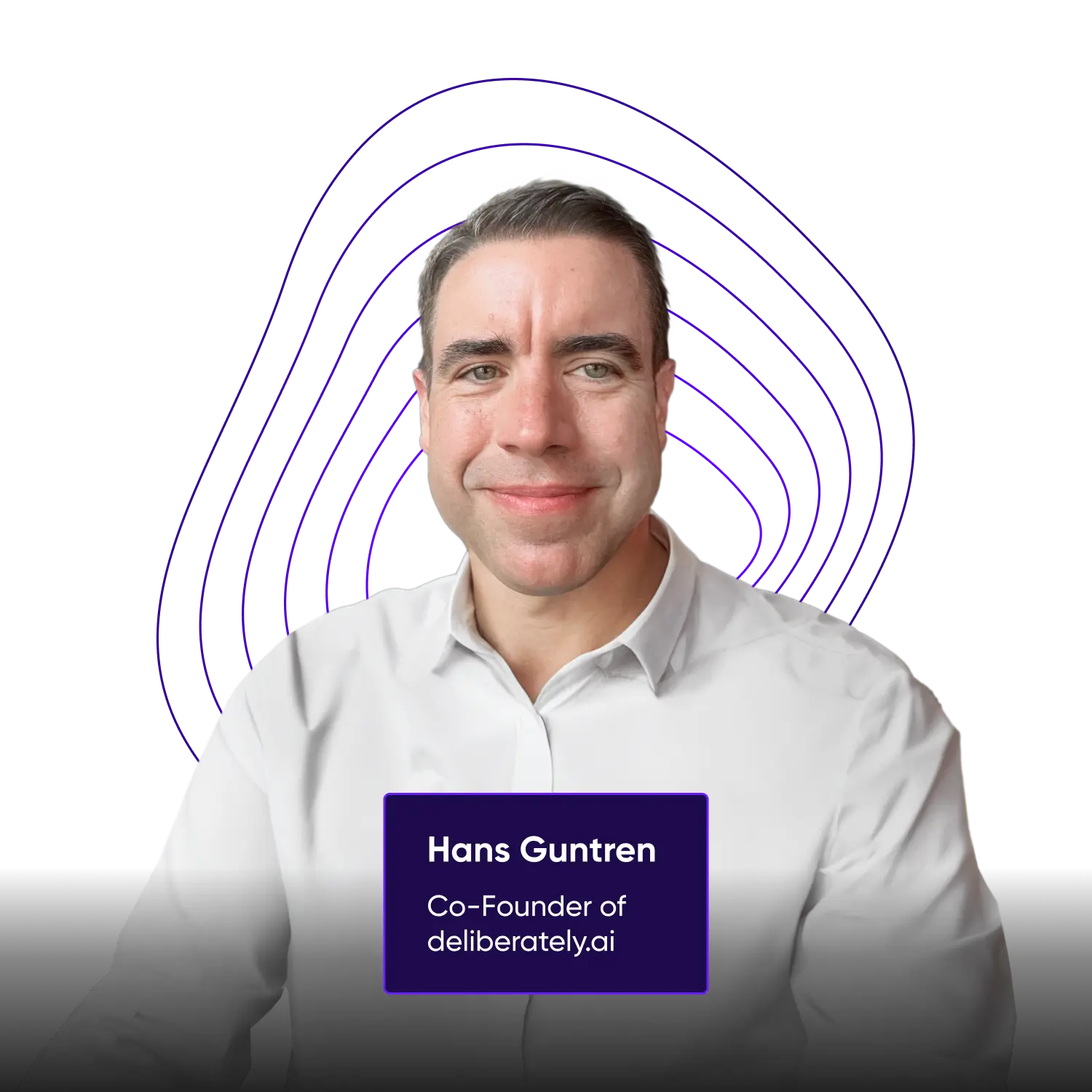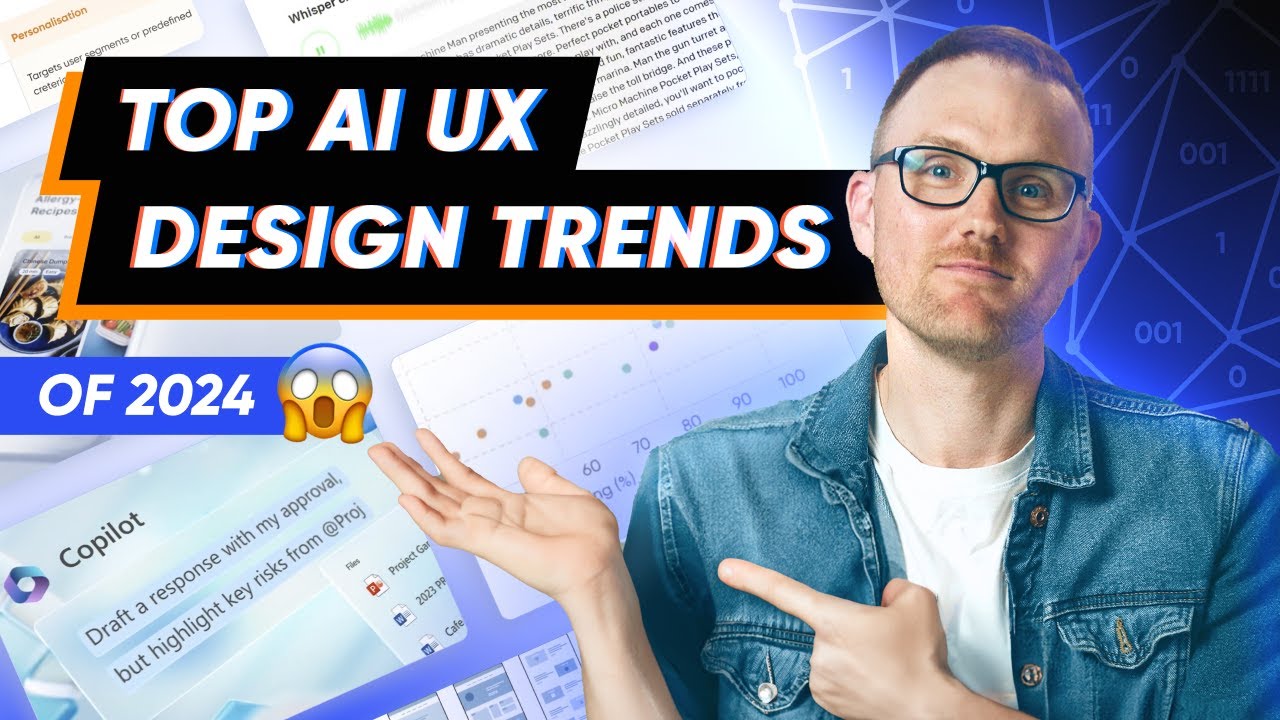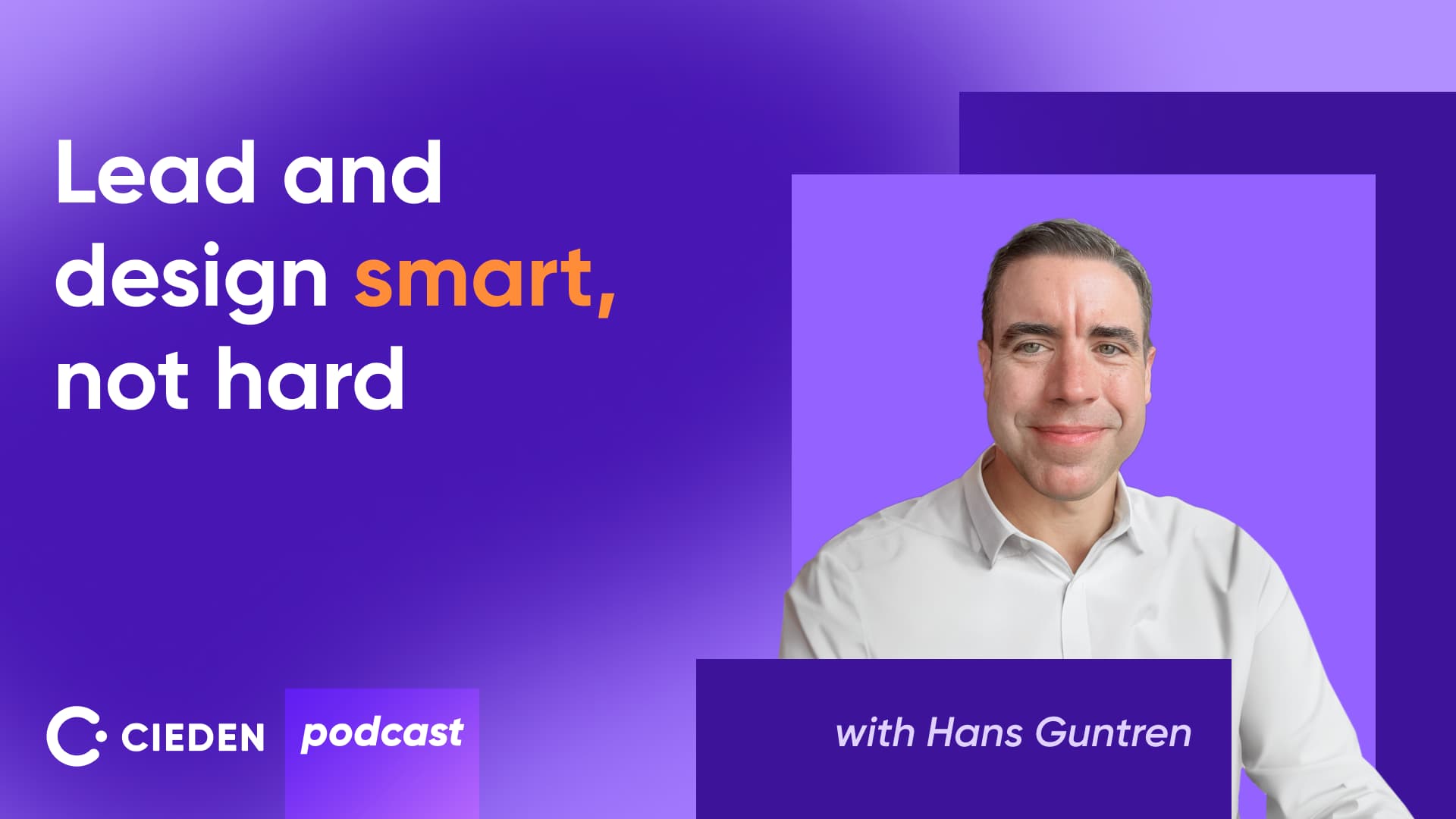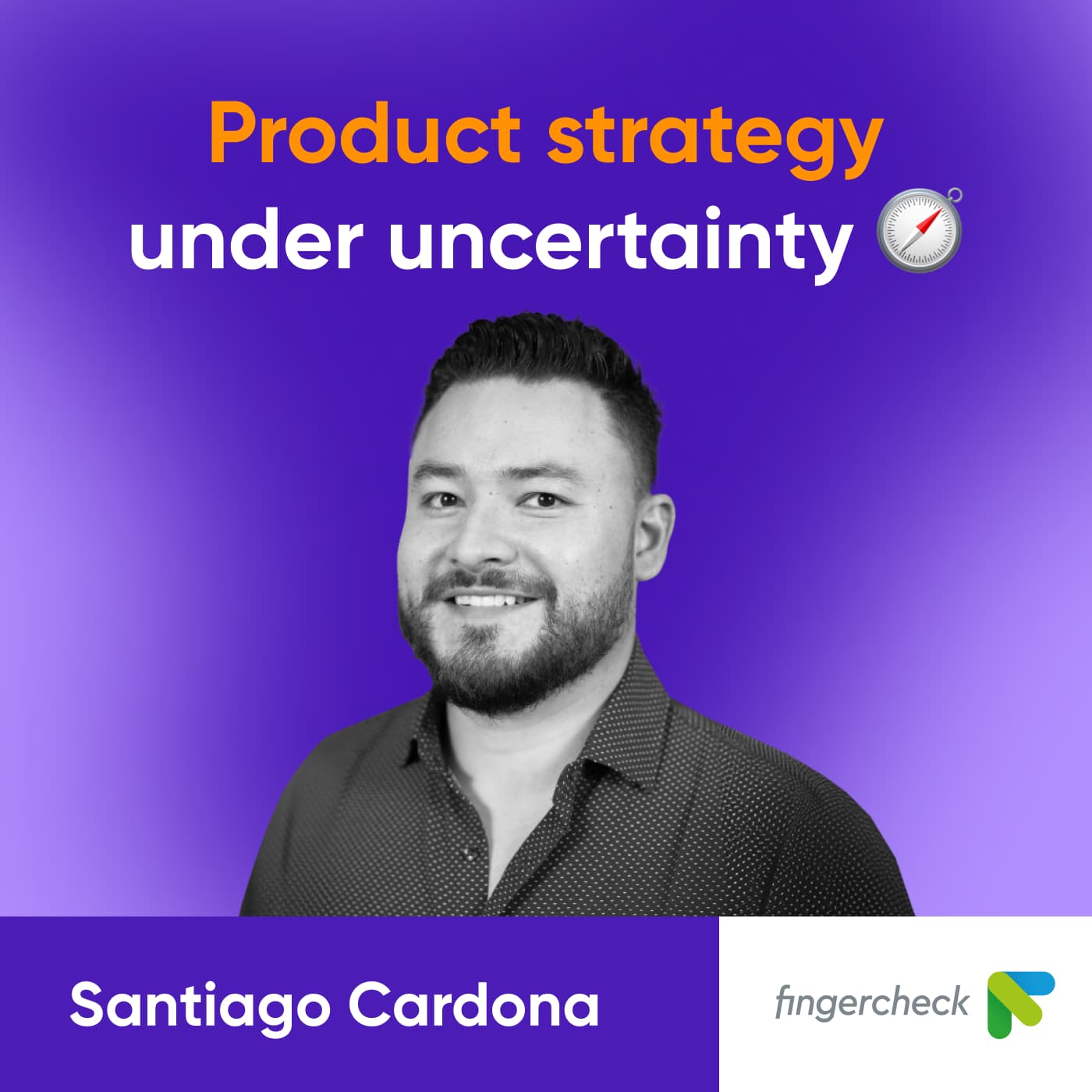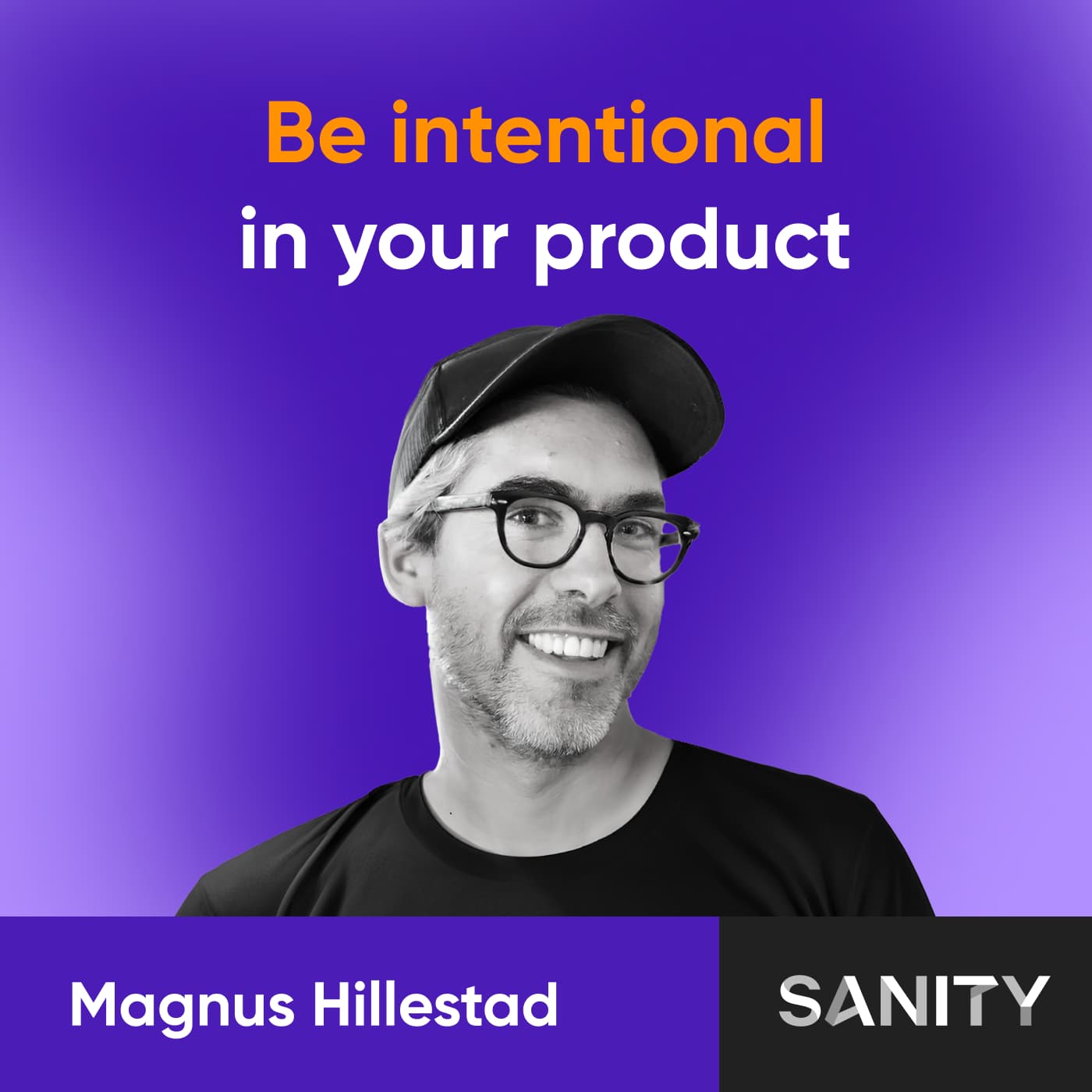Hans Guntren is the Co-Founder of deliberately.ai and former Vice President of Product Design at Demandbase. He focuses on delivering customer value through AI and Machine Learning.
Hans is a veteran technology executive and board advisor with over 20 years of product design experience. He spent over a decade advising Silicon Valley technology firms and worked within IBM's Silicon Valley Lab, where he managed product design and oversaw a host of complex enterprise products. In addition to his experience with Fortune 500 companies, he helps early-stage startups develop their product vision and design.
In this episode, Hans and Yuriy discuss what's wrong with the trend of incorporating AI into products. They also talk about the graceful way of working with a design team and teaching young people that winning is not just about brute force.
Hans's background
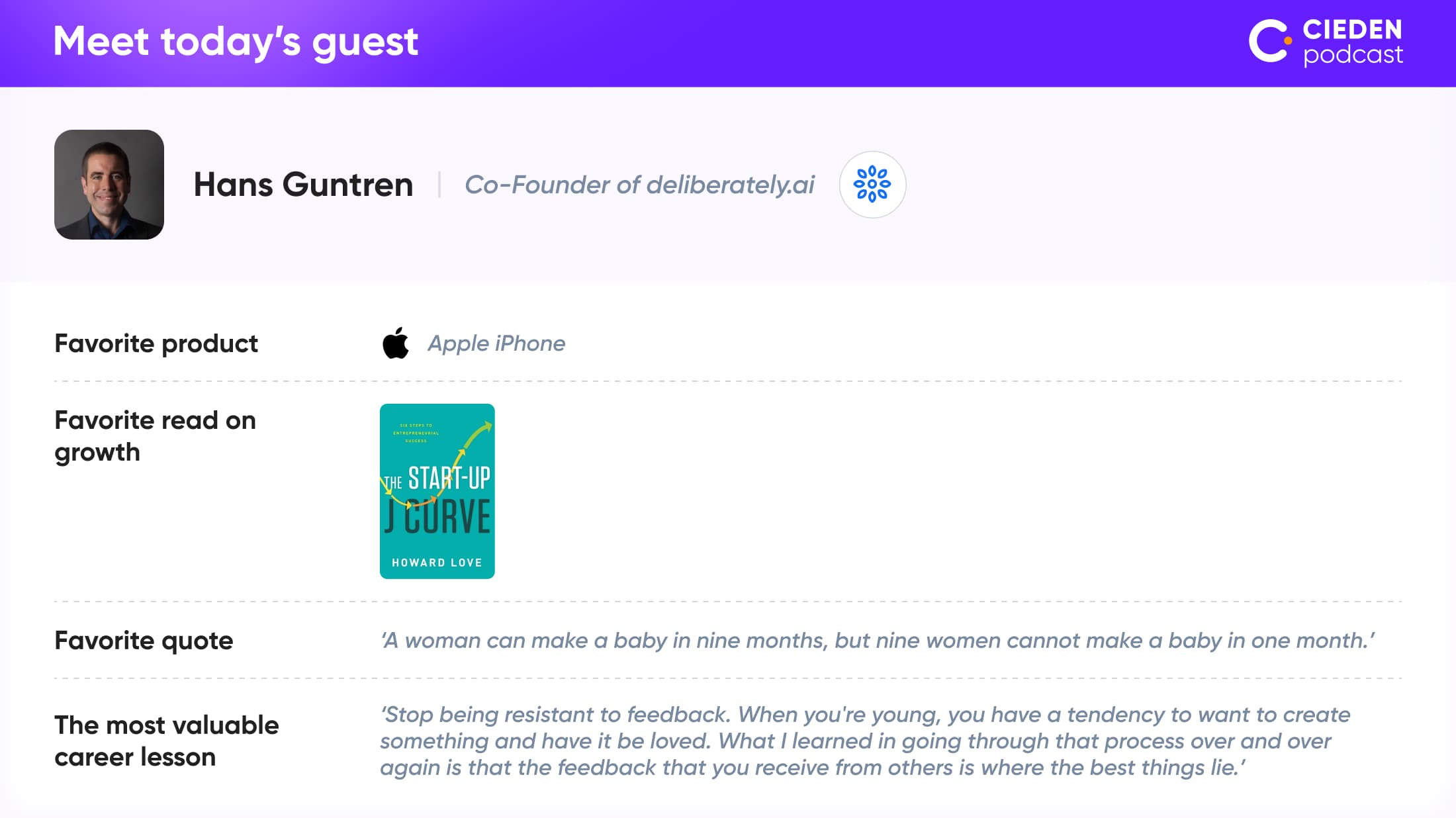
Winning is not just all about brute force
Yuriy: Hans, what do you do in your work life? How do you describe the challenges you currently have? And as a design manager, how much is actually work and life balance?
Hans: Yeah, you know, it's gotten easier. I think when we're young, we often don't know what we don't know. And we try to compensate for that with brute force. If we work long enough hours, we'll inevitably win. And I think as you get some experience under your belt, you start to realize that winning is not necessarily just all about brute force. It's about being strategic in your decision-making and making good decisions early that pay dividends over the long term. And I think when it comes to building a team, for me, it's all about hiring. And if you hire amazing people who are smart and humble and driven, people that are truly motivated to build great products and help people, your life gets easier and easier as a product design leader. I've seen that firsthand where the team is so motivated to drive hard and win, they barely leave me anything to do. And that's a wonderful feeling. That's when I think you're really in a place of flow with your product and your team. And I've gotten pretty good at that. And honestly, I don't feel that it's ever an issue to balance work and life anymore. I'm outside of work, I'm a dad. I've got two teenage boys. I'm sure they would like more of my time, but I feel like we actually have lots of great quality time in addition to working hard.
The role of a design manager
Yuriy: So in the role of a design manager, do you think it's more a manager or a person who is focused on design? Because you can focus more on people management or focus more on design management. And there are a lot of different discussions going on.
Hans: Yeah. I mean, clearly, there are many different people with many different orientations, but for me, the product comes first. And again, I think the more you invest in hiring, the less you will have to invest in management over time. And I've seen that firsthand, the quality of the people that you work with dictates the quality of your life. And the value I have, I obviously can manage people, but the value that I have is really building products. And that's where I would prefer to spend the vast majority of my time is thinking strategically about where the product's going and how to get there and offering that vision to the team and building alignment so that people are working collectively towards that, I think is where most of my energy goes.
Yuriy: Perhaps you can call yourself a veteran in the design industry. You had the title of head of product design 24 years ago.From your point of view, how design changed and especially design management in business applications through all these years?
Hans: Well, it certainly changed a lot. I was fortunate to end up at IBM early on. And IBM had a pretty mature product design practice within its software group. And that's where I learned a lot. I started to realize there was a difference between information architects and visual designers, and researchers, and front-end developers. And I think that was just the beginning of the structure that we have today. A big shift in the industry that I saw was with the advent of the iPhone. I think that really cemented for all other software companies the value of great experience. People saw it firsthand and they held it in their hand and they recognized the difference in the experience between the iPhone and whatever they had prior to that. And it seemed like from that point forward, the product design practice was generally a formal part of every startup company that I had seen here in Silicon Valley. And that was nice. I no longer had to go in and explain the purpose and value of product design. People just get it.
Is design a commodity?
Yuriy: Do you think we are leading to a time when design will be a commodity, like just expected that every product should have good design, or it's still in the early stages and there's still a lot of work to be done, especially in B2B applications?
Hans: I think it's an evolution. It's a continuum. We are at that stage where I think it's universal. It's ubiquitous that people building software products understand user experience and the value of that. Not all folks understand the process. I do know of companies that just think, ‘Hey, if I have a product designer, I must be good, you know, and they don't invest in it as heavily as others.’ And that's changing too, I think over time, as with engineering or product management, product design will become a very rigorous and formal process, it already is. In terms of being commoditized, that's a really interesting question. I have a lot of thoughts about where the industry is going in relation to generative tech. There is already one year into this transition towards large language models, we already have tools that are generating experiences for us. And I have no doubt that that's gonna continue and those products are gonna become more and more valuable. And it's gonna be really interesting to see what that means for product designers. Our industry will change, and it's probably up to us to change with it.
Yuriy: Do you see it as a risk for our profession or an opportunity?
Hans: Certainly an opportunity. You know, we've gone through many revolutions over the course of humanity and they've all been good for us. And this is no exception. I think the risk or the challenge of it is the pace. You know, generally speaking, humans need time to adapt and I've never seen anything quite like this in terms of the speed of innovation. And so when I think about careers in general changing because of AI, that's the part that's a little bit unknown for me is like how will humans adapt quickly enough for the tools that are being created today?
The difference between consultancy and product work
Yuriy: You also have experience with consultancy. Early on. How do you see the difference between working in a consultancy and working on a product? And also, I know that you also advise some startups so there's still partially in consultancy. What's the difference in your job when you're consulting and when you are actually in the product?
Hans: Well, sometimes I describe consulting as being twice as hard. And then people say, well, why would I do it? And I say, well, it's also five times as fun. And I really enjoyed it primarily because it gave me visibility into so many different things all at once. Typically, I would consult for three or four companies at a time. And that's a bit like training to be an Olympic athlete because you're really forced to be thinking about different products, different spaces, different personas, different industries. And what I saw is that oftentimes the things that you're learning in one engagement are useful in others and you would not have thought of those if you weren't sort of jumping from project to project inside of a given day. It gives you an opportunity to cross-pollinate in a way that brings a lot of value to all the companies that you work on. And another benefit of it is that it really got me over any fear or anxiety that I had about working on something new. I think when you go work for a company, spend five years there, however long you spend, then you leave, it's like, my gosh, and now I gotta start from scratch. And if you spend a few years consulting, you're starting from scratch all the time, over and over again. You're really exercising that muscle, whatever it is, and you completely lose your fear of it. And that's a kind of a superpower, I think, because each day there's something new that you have to tackle. And if nothing scares you, I think you can do a better job.
The biggest mistake in integrating AI into products
Yuriy: We recently had an interesting chat with my team about different types of R&D in design. Everybody knows that you have to do research before you start. And usually when we talk about research in design, it's about user research. So you talk with users, try to understand their pains, where they struggle, what are the opportunities, and then you build the product. But this type of innovation that's called the demand pull. When people need something, we find what they need and we build the product. With AI, it's a different story because it's a technology push. We have a technology and now we have to find how to integrate it into our product, what can be built. It's actually proof of concepts, about vision, about something, even when you can't copy the patterns from other products. And I see that many designers may have trouble with this kind of approach because there is no methodology. What is your advice on how to work on this kind of innovation?
Hans: There are many hundreds or thousands of traditional products out there with product teams who are saying, we want to be an AI product. Can you just figure out how to put some AI in our product? And if you sit in front of a whiteboard, you'll think of a bunch of different ideas and ways to do that. And, most of it sounds really exciting and the company will say, yeah, let's do that. And then we can be an AI company. But the truth is that those are solutions searching for a need. And I think it's a bit backwards. I think the best products always start with a need and good research, good process, as you mentioned, where you have a problem that needs to be solved, and then you think about all of the tools that are available to you in solving it. And I still do that. I think you have to think that way. You have to avoid this trap of saying, hey, can you just incorporate AI into our product somehow? Put some chat interface in here. Most of that stuff doesn't offer much value beyond, say, marketing value.
Yuriy: Yeah, I definitely see it in lots of products that try to push AI on you. And even like trying to ask for some feedback, we recently had requests for an interview with Coda when they also asked some questions why we are using AI or not using and how to find a solution. But actually it shows that adoption rate for AI features perhaps isn't as high as the products expected when they were launching the systems. Yeah, but still they can find some insights from this kind of... When they launch the features, then they can talk with users and see what are the opportunities to enhance it and maybe remove some AI features and that's something you need to start with some learnings and without providing proof of concept of these features, it's really hard to learn, perhaps. Yeah, or we can just wait for other products to be successful and then copy their patterns, but it's always following others.
Future of AI in product design
Yuriy: Yeah, so in your product, do you have any experience working on AI features and how did you, because I understand in your previous job, your product was also connected with AI and now every product is an AI product. So how do you approach this?
Hans: In my mind, there are at least two categories, right? There are the traditional products that have already been built, and those product teams are looking for ways to augment them using large language models, and that could be like a better experience, a better interaction paradigm. But then there are, I think, the second category, which are problems in the world that were previously unsolvable. And now suddenly we have tools and capabilities that allow us to solve them for the first time. And the latter is an area that I'm particularly interested in. I mean, if you really think about it, the advent of large language models has literally kicked the door open on every field, every industry, every imaginable problem. And suddenly we have this new arsenal of tools that allow us to solve things that we couldn't previously solve. And previously they just required humans to do them. And so I'm very interested in being part of that transformation that's happening in the world.
Yuriy: And what I hear from different VCs, because I do a lot of research in AI to see what would be a successful product. So there is a widespread idea that the next stage, the first year of large language models, was about embedding chats everywhere or maybe like some textual generative interfaces. And the next stage is coming, where the user experience will change a lot and good user experience working with AI will be game-changing on the reason of success or failure of different products. Because now we will have AI working on the backend that will be proactively building workflows for us, automating a lot of stuff and providing value. So it's not just chatting or uploading documents and getting a summary of this document. It's more about the internal logic of the system that works as our co-pilot, agent, anybody, how you, it doesn't matter what you call this AI, that is your partner or even coach sometimes that helps you run your business or run your professional responsibilities.
Hans: Yeah, that's right.
